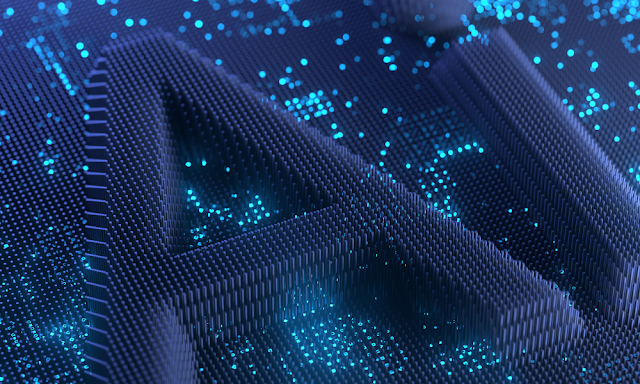Neural Networks vs Deep Learning: Understanding the Core Concepts
In today’s AI-driven world, terms like neural networks and deep learning often dominate conversations around machine learning and artificial intelligence. While they are closely related and frequently used interchangeably, they are not synonymous. Understanding the core concepts of neural networks and deep learning is essential for anyone exploring AI, whether as a tech enthusiast, developer, or decision-maker in a data-driven business.
What Are Neural Networks?
At its core, a neural network is a computational model inspired by the human brain. Just as our brains consist of neurons that process and transmit information, artificial neural networks (ANNs) are made up of interconnected nodes (also called neurons) organized in layers.
Each neuron in a neural network receives input, processes it using an activation function, and passes the output to neurons in the next layer. A simple neural network typically consists of:
- Input layer – receives the initial data (e.g., an image, text, or numerical input)
- Hidden layers – perform computations and transformations on the data
- Output layer – provides the final result, such as a classification or prediction
These networks "learn" by adjusting the weights of the connections between neurons during training, minimizing the error in predictions using techniques like backpropagation and gradient descent.
What Is Deep Learning?
Deep learning is a subset of machine learning that specifically uses deep neural networks, neural networks with multiple (often many) hidden layers. While traditional neural networks may have one or two hidden layers, deep learning models can contain dozens or even hundreds.
Deep learning thrives on massive datasets and powerful computing resources. Its success lies in its ability to automatically learn features and representations from raw data, eliminating the need for manual feature engineering that traditional machine learning models often require.
Some of the most well-known deep learning architectures include:
- Convolutional Neural Networks (CNNs) – ideal for image recognition and computer vision tasks.
- Recurrent Neural Networks (RNNs) – used for sequential data like time series or natural language.
- Transformers – the backbone of modern NLP models like ChatGPT, BERT, and GPT-4.
Neural Networks vs Deep Learning: The Key Differences
While deep learning uses neural networks, not all neural networks qualify as deep learning models. Here's how they differ in key areas:
- Definition: A neural network is a model inspired by the structure of the human brain, capable of learning patterns from data. Deep learning is a specialized field within neural networks that involves architectures with multiple hidden layers, allowing the system to model very complex patterns and hierarchies in data.
- Complexity: Neural networks can be relatively simple, with only a few layers between input and output. Deep learning, on the other hand, involves very deep architectures, sometimes with dozens or even hundreds of layers. This added depth enables deep learning models to achieve greater accuracy and tackle more sophisticated problems.
- Training Data: Basic neural networks can perform well with smaller datasets. In contrast, deep learning models generally require vast amounts of labeled data to perform effectively. The more data a deep learning model has access to, the better it can generalize.
- Feature Engineering: Traditional neural networks often require manual selection and transformation of features before training. Deep learning models automatically extract high-level features from raw data through their layered structure, significantly reducing the need for manual intervention.
- Computation: Deep learning models are computationally intensive. Training them typically requires powerful GPUs or TPUs, while simpler neural networks can often be trained on standard CPUs.
- Applications: Neural networks are suited for simpler prediction or classification tasks, such as predicting customer churn or spam detection. Deep learning, with its added complexity, is used in applications like self-driving cars, facial recognition, speech synthesis, and advanced natural language processing.
Why the Confusion?
The confusion arises because deep learning is built on neural networks. You can think of deep learning as an advanced stage in the evolution of neural networks. Much like how smartphones are advanced mobile phones, deep learning is an advanced use of neural networks with greater capacity to model complex patterns and relationships.
Real-World Applications
Understanding the practical differences becomes clearer when examining real-world use cases:
- Neural Networks (Shallow): A simple neural network might be used to predict customer churn using basic user data or classify emails as spam or not spam.
- Deep Learning: A deep neural network would be used for tasks like facial recognition in security systems, real-time language translation, or autonomous driving where the model needs to understand video input, sensor data, and complex interactions.
Which One Should You Use?
Choosing between neural networks and deep learning depends on several factors:
- Data availability: If you have a small dataset, a traditional (shallow) neural network or classical machine learning algorithm may perform better.
- Problem complexity: For tasks like fraud detection, text generation, or autonomous navigation, deep learning is more appropriate due to its ability to capture intricate patterns.
- Resources: Deep learning models demand significant computing power and time for training, while simpler neural networks can often run on standard CPUs.
Conclusion
Neural networks and deep learning represent two sides of the same coin. Neural networks provide the foundational architecture upon which deep learning is built. While neural networks can solve many problems effectively, deep learning takes things further by handling complex, high-dimensional data and enabling state-of-the-art performance in many AI applications.
As AI continues to evolve, understanding these core concepts helps demystify the technology and empowers individuals and organizations to make informed decisions about how to integrate intelligent systems into their workflows. Whether you’re building a basic chatbot or a sophisticated autonomous vehicle, the right model starts with the right understanding.
.jpg)

Comments
Post a Comment